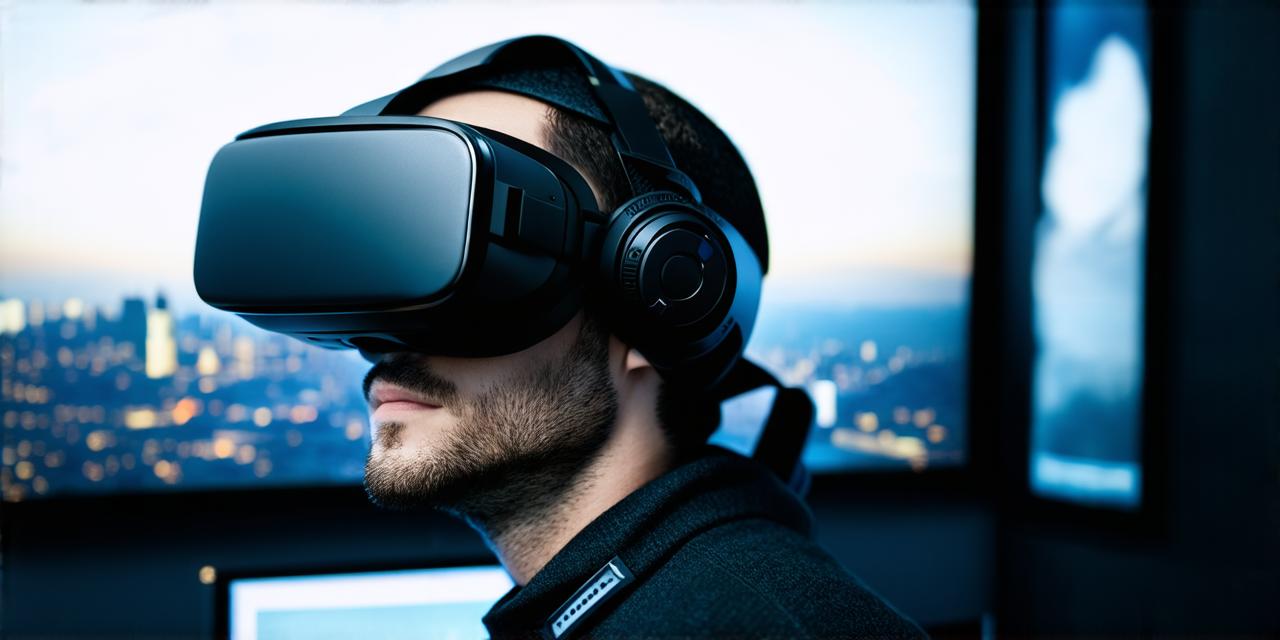Why Virtual Reality is Essential for Hiring
Virtual reality technology offers many benefits that make it essential for hiring. One of the main advantages of VR is that it allows companies to provide immersive experiences to candidates, which can help them get a better sense of what it’s like to work in a particular role. This can be especially useful for jobs that require hands-on skills or are difficult to simulate in real life.
For example, consider a construction company that needs to hire a crane operator. Traditionally, the hiring process would involve a written test and an interview with the candidate. However, VR technology can provide a more realistic experience by allowing the candidate to operate a virtual crane and get a better sense of what it’s like on the job.
Another advantage of VR technology is that it allows companies to train candidates more effectively. By providing immersive experiences, VR can help candidates learn new skills and practice their existing ones in a safe and controlled environment. This can lead to faster learning and better retention of information, which can ultimately lead to more effective job performance.
Case Studies: How Virtual Reality is Helping Companies with Hiring
There are many examples of how VR technology is being used to aid in real-world hiring processes. Here are a few case studies that illustrate the benefits of VR:
1. Tesla’s VR Training Program
Tesla, the electric car manufacturer, has developed a VR training program that allows employees to practice their skills in a virtual environment. The program includes tasks such as welding, painting, and assembly, and it uses realistic graphics and sound effects to simulate the experience of working on a Tesla vehicle. By providing this immersive training experience, Tesla has been able to reduce errors and improve job performance.
2. Air Force’s VR Flight Training Program
The US Air Force has developed a VR flight training program that allows pilots to practice their skills in a virtual environment. The program includes simulations of different types of aircraft and weather conditions, and it provides real-time feedback on the pilot’s performance. By using VR for flight training, the Air Force has been able to reduce the risk of accidents and improve overall mission readiness.
3. PwC’s VR Interview Process
PwC, a global consulting firm, has developed a VR interview process that allows candidates to experience what it’s like to work at PwC. The process includes a virtual office tour, an introduction to the firm’s culture and values, and a simulated client meeting. By providing this immersive interview experience, PwC has been able to attract top talent and improve its hiring process.
How VR is Changing the Job Market
Virtual reality technology is also changing the job market by creating new opportunities for candidates with specialized skills. For example, as more companies adopt VR technology for training and hiring, there will be a growing demand for VR developers and engineers. In addition, VR technology is also being used in fields such as healthcare, education, and entertainment, which means that there will be a range of job opportunities available to candidates with the right skills.
FAQs
Here are some common questions about how virtual reality can aid in real-world hiring processes:
1. How does VR technology work?
Virtual reality technology involves wearing a headset or pair of glasses that track your movements and provide a 360-degree view of a virtual environment. This immersive experience can help candidates get a better sense of what it’s like to work in a particular role.
2. What types of jobs can VR aid in the hiring process?
Virtual reality technology can be used for a wide range of jobs, including construction, healthcare, education, and entertainment. By providing immersive experiences, VR can help candidates get a better sense of what it’s like to work in a particular role.
3. How does VR training differ from traditional training methods?
Virtual reality training provides an immersive experience that allows candidates to learn new skills and practice their existing ones in a safe and controlled environment. This can lead to faster learning and better retention of information, which can ultimately lead to more effective job performance.
4. How does VR technology impact the job market?
Virtual reality technology is creating new opportunities for candidates with specialized skills, such as VR developers and engineers. In addition, VR technology is also being used in fields such as healthcare, education, and entertainment, which means that there will be a range of job opportunities available to candidates with the right skills.
Conclusion
Virtual reality technology is transforming the hiring process by providing immersive experiences that can help companies identify the best candidates for a job and train them more effectively. By using VR technology for real-world hiring processes, businesses can attract top talent, improve their job performance, and create new opportunities in the job market. As VR technology continues to evolve, we can expect to see even more exciting developments in the way we hire and train employees.
